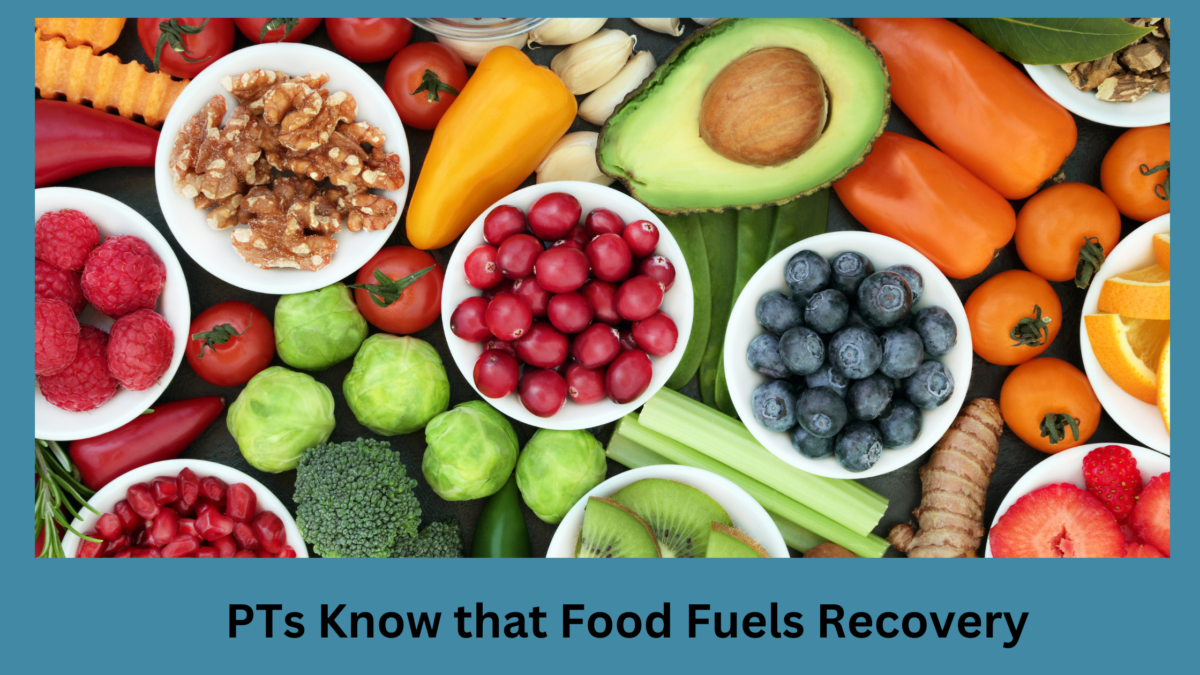Physical therapy and nutrition are often seen as separate, but physical therapists know that they are deeply intertwined. To get the most out of therapy, especially after an injury or surgery, successfully integrating both is crucial.
During recovery from an injury or surgery, the body is working to heal itself. PT activities and exercises are designed to help it along. Nutrition is literally the fuel that makes the whole process work. Patients who are low on fuel have a slower or incomplete recovery. Protein is a great example of a recovery fuel.
Protein provides the building blocks for tissue repair and muscle growth. Recovery from an injury increases the body’s protein demand. People who don’t eat enough will heal slower. The body will also struggle to build new muscle, which will lead to less mobility, range of motion and strength. That means it takes longer to get back to normal activities.
Healing also requires sufficient micronutrients, like vitamins and minerals. For example, vitamin C is needed to make collagen, which goes into bones, skin, and connective tissue. Vitamin D helps your body absorb calcium, which is important for healing fractures, or surgeries involving bones. Iron helps blood cells carry oxygen throughout your body, which is needed for healing in general. Again, being low on any of these micronutrients affects healing.
Poor nutrition can affect people before they end up in the PT clinic. In fact, it can directly contribute to the reasons they are there. Being overweight leads to a higher risk for cardiovascular disease, stroke, osteoarthritis, back pain, diabetes, sleep apnea, and more.
All of these are conditions that might lead to the need for PT, or that impact healing from injury. Eating a healthy diet is the most effective way to reduce body weight. Combining a healthy diet with exercise is even better.
As an example, an 18-month study of 450 people with knee osteoarthritis showed that the group that lost weight through a diet and who also exercised had less pain, better walking speed, and lower joint forces in their knees than groups who either only lost weight, or only exercised. Studies have also shown that people who are overweight or obese are 2.5 to 4.5 times more likely to develop knee osteoarthritis.
While PTs are not typically specifically trained to provide individual diet plans or medical nutritional advice, they can still help with nutrition education. PTs can help patients to look for potential nutritional deficiencies or imbalances that may impact progress in PT or negatively impact overall health. PTs can educate people on the importance of nutrition for various aspects of rehabilitation and recovery and provide general guidance on healthy eating patterns, portion control, and choosing nutrient-rich foods. PTs also recognize that overall health and well-being involve various factors, including proper nutrition. They can encourage patients to adopt healthy lifestyle habits that include a balanced diet alongside regular exercise and proper sleep hygiene.
Finally, when a patient’s nutrition needs exceed what they can provide, a PT can help to facilitate a referral to a registered dietician or another qualified healthcare professional for help in dealing with complex nutritional needs or recommending specific dietary changes.
While they’re known for being movement experts, physical therapists are also aware that great movement requires the best fuel. They can use their knowledge to help patients combine both to get the most out of recovery.

